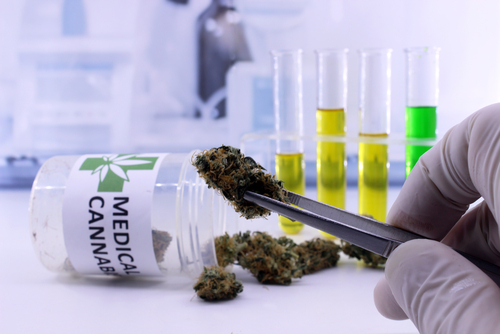Combining cannabidiol (CBD) with clobazam — a well-known treatment for childhood epilepsies like Lennox‑Gastaut syndrome (LGS) — leads to greater anti-seizure effects, but only when given at its therapeutic dose, a preclinical study shows.
These findings, which suggest that CDB has its own anti-seizure properties, may bring clarity to the recent debate on whether CBD’s benefits are due only to its ability to increase clobazam’s availability in the body.
They also suggest that the anti-seizure effects of CBD and clobazam are at least partly related to the activation of GABAA receptors in nerve cells. These receptors work to prevent excessive nerve cell activity, which is at the root of many types of epilepsy, including LGS.
The study, “Coadministered cannabidiol and clobazam: Preclinical evidence for both pharmacodynamic and pharmacokinetic interactions,” was published in the journal Epilepsia.
CBD, the major non-psychoactive cannabinoid (active component) in the cannabis plant, mimics the body’s natural cannabinoids. It is suggested to have anti-seizure, anti-inflammatory, antioxidant, neuroprotective, and immunomodulatory properties.
Epidiolex, a purified and oral form of CBD by GW Pharmaceuticals, was the first cannabis-based medicine to be approved in the U.S., and more recently in Europe, to treat seizures associated with LGS and Dravet syndrome — another type of severe childhood epilepsy — in patients age 2 and older.
These approvals were based on data from three Phase 3 trials (NCT02091375, NCT02224703, and NCT02224560) and an open-label extension study (NCT02224573) that showed Epidiolex led to a significant reduction in drop-seizure frequency in patients with LGS or Dravet syndrome.
However, a debate over Epidiolex’s individual anti-seizure effects was recently raised as 50%-60% of these patients were also using clobazam, and the combination of Epidiolex with clobazam was found to increase the blood levels of clobazam’s active component, N‐CLB.
Previous studies highlighted that a bidirectional interaction between CBD and clobazam exists, and that the levels of N‐CLB are increased likely due to the suppression of its degradation.
Australian researchers set out to evaluate whether CDB has anti-seizure effects independent of clobazam.
Using chemical assays and healthy mice, they confirmed that CBD increased the blood and brain levels of clobazam and N‐CLB through the suppression of two key enzymes, CYP3A4 and CYP2C19. CYP3A4 breaks clobazam down into N‐CLB, while CYP2C19 inactivates N‐CLB. This way, CBD prolonged the availability, and potentially the effectiveness, of both clobazam and N‐CLB in healthy mice.
The team then evaluated the anti-seizure effects of CBD and clobazam, together or alone, in a mouse model of Dravet syndrome.
Results showed that a CBD–clobazam combination led to a greater reduction of hyperthermia-induced seizures in these mice than either of the treatments separately. This increased anti-seizure effectiveness required the use of therapeutic doses for both compounds, i.e., doses shown to have anti-seizure effects on their own.
Researchers emphasized that treating mice with a therapeutic dose of clobazam and a sub-therapeutic dose of CBD did not boost the anti-seizure effects, despite significantly increasing clobazam’s blood levels.
“The clinical efficacy of CBD may not simply be explained by CBD increasing [blood] concentrations of clobazam and N‐CLB,” the researchers wrote.
In addition, CBD–clobazam combination treatment resulted in a lower proportion of mice having spontaneous seizures and in a significant survival benefit compared with CBD or clobazam alone.
“Our results here suggest a novel benefit of CBD and clobazam combination therapy on premature death, a devastating aspect of the Dravet syndrome,” the researchers wrote.
The team also found that one of the potential underlying mechanisms of CBD–clobazam combination effects is the activation of GABAA receptors. Mutations leading to the abnormal activity of these receptors have been previously associated with LGS and Dravet syndrome.
The combination of CBD and clobazam led to greater GABAA activation and nerve cell activity suppression — potentially preventing seizures — than did either compound alone. In addition, CBD and clobazam were found to bind to GABAA receptors (leading to their activation) at different sites of the receptors.
“We describe a novel … interaction that might explain the magnified [anti-seizure] effects of combination therapy, in which CBD and clobazam cooperatively enhance [the suppressive activity of] GABAA receptors,” the researchers wrote.
Their findings suggest that CBD-associated seizure reduction is likely caused by the interaction between CBD and clobazam, their independent activation of GABAA receptors, as well as the multiple action of CBD on other anti-seizure pathways, the researchers concluded.
This work was supported by the Lambert Initiative for Cannabinoid Therapeutics at the University of Sydney in Australia. At least two of the authors hold positions at the Lambert Initiative.

